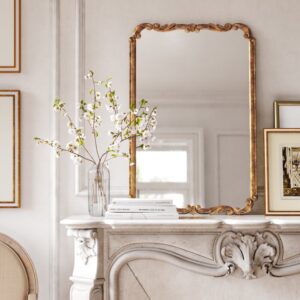Mi köze a tükröknek a zsidó nép fennmaradásához?
Előző hetiszakaszunkban, a Vájákhélben, a Miskán leírása hangsúlyozza a nők szerepét. Úgy áll, hogy először a nők jöttek adományozni a Miskánhoz, a férfiak pedig az ő példájukat követték.
Slomó Luntschitz rabbi elmagyarázza, hogy mivel a sivatagi Szentély az aranyborjú szörnyű bűnének az engesztelésére volt, az építkezéshez a nőknek nem lett volna szükséges hozzájárulni, hiszen nekik nem kellett volna részt venni az engesztelésben. Mégis, először ők adományoztak.
Ahogy olvashatjuk: „És [Becálél] elkészítette a medencét rézből és talapzatát rézből, az odasereglő nők tükreiből, akik odasereglettek a gyülekezés sátorának bejáratához.” (2Mózes 38:8.)
Bölcseink elmesélik a réz medence mögötti történetet. A rabszolgaság idején az egyiptomiak véget akartak vetni Izrael népének, el akarták veszejteni a fiúgyermekeket, a férfiaknak és a nőknek egész nap dolgozniuk kellett, még éjszakára is tilos volt hazamenniük. Meg akarták szüntetni a zsidók magánéletét, hogy ne lehessen nekik több gyermekük. Azonban a nők erre rájöttek és tükröket használtak, hogy vonzóbbá tegyék magukat a férjük számára, így új lendületet kapott a kapcsolatuk, ami egy új generációhoz vezetett.
Az asszonyok ezeket a tükröket elhozták Mózesnek, aki kezdetben visszautasította adományukat, de az Örökkévaló megparancsolta neki, hogy fogadja el azokat.
A sivatagi Szentélyben álló réz medence arra tanít minket, hogy a nők hite nélkül a zsidó nép és a judaizmus nem maradhatott volna fenn.
Sábát sálom,
Paskesz Sharon

The Torah in Parashat Vayakhel, which describes the making of the Mishkan goes out of its way to emphasise the role women played in it.
“Every skilled woman volunteers also span the goats wool.”
The emphasis is even greater than it seems in translation, because of the unusual location in verse 22: the Women came to make their donations first, and the men merely followed their lead.
Rabbi Shlomo Luntschitz, explains that since the Tabernacle was an atonement for the Golden Calf, the Women had no need to contribute at all since it was the men not the Women who needed atonement. None the less, woman gave and did so before the men.
In addition to this its written in our Parasha;
“He (Betzalel) made the copper washstand and its copper base out of the mirrors of the dedicated Women who congregated at the entrance of the community tent.”
The Sages are telling us the story behind the copper washstand.
The Egyptians wanted to put an end to the people of Israel.
On way was to kill all male children, another was simply to interrupt family life.
Men and Women were labouring all day, at night forbidden to return home. The intention was to destroy privacy, so that the Israelits would have no more children.
The Women realised this, and decided to combat.
They used mirrors to make themselves attractive to their husbands and relations resumed, which led to a new generation of Jewish children.
The Women brought their mirrors to Moshe, who in the beginning rejected their donation, but HaShem rebuked him and ordered him to accept them.
The copper washstand teaches us that without the faith of women Jews and Judaism would never survive.
Shabbat Shalom,
Sharon Paskesz
Kép forrása.

